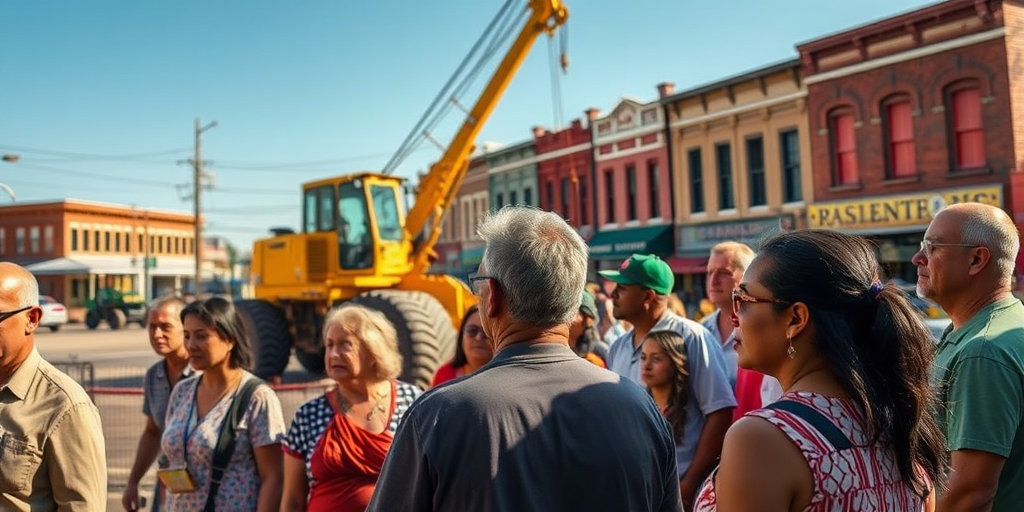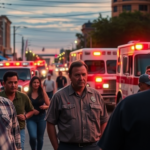Public Input Requested on Proposed Cameron County Highway Project
Cameron County officials are actively seeking public input on a proposed transportation project that aims to transform connectivity in the region. The plan involves constructing a new 21-mile, four-lane highway that would create a direct route from north of Harlingen to the coast. The highway, referred to as the Outer Parkway Project, is designed to link with a future causeway, promising enhanced regional transportation infrastructure.
Project Overview and Context
The proposed highway project, led by the Cameron County Regional Mobility Authority (CCRMA), is currently in its environmental review phase. This phase is crucial for assessing the various impacts the project may have on the natural environment, and it includes multiple options for the highway’s location. Public input is solicited from residents, particularly those likely to be directly affected by the new construction, to choose the most suitable route among the alternatives considered.
Pete Sepulveda, the Executive Director of Cameron County RMA, emphasized the importance of public involvement: “We have environmental sensitive areas that we’re fully aware of. So what we’ve done is start the process of public involvement. We want to ensure early on that the community knows what’s happening and can provide their input.”
The project’s announcement comes at a time when Texas lawmakers are grappling with issues ranging from immigration policy changes to infrastructure improvements, underscoring the project’s strategic importance for South Texas.
Local Impact and Community Concerns
Valley residents could see significant benefits from the proposed highway, including reduced travel times and potential economic growth spurred by improved access to coastal areas. The connectivity enhancements could also lead to attracting more businesses and tourism, boosting the local economy.
However, the project must also address concerns related to environmental preservation and property rights. For some residents, the proposed highway could mean navigating disruptions and potential changes to their property use. It’s for this reason that local officials are particularly keen on engaging with the community to gather input and address concerns, ensuring a balanced approach that considers all stakeholders.
Residents have already voiced varied opinions. Some see the highway as a much-needed infrastructure boost. For instance, Carolina Hanna, a local business owner, believes the highway could offer her bakery in Harlingen a new stream of customers. “This could open up access to a broader market for us, making it easier for people to drop by on their way to the coast,” she noted.
On the other hand, some community members like Mike Gomez, who lives near one of the proposed routes, worry about the construction impact. “While I understand the need for development, it’s hard not to be concerned about the traffic and environmental noise this might bring to our neighborhood,” Gomez shared.
Connection to Ongoing Issues
The push for a new highway ties into a larger conversation about regional development and infrastructure in South Texas. Hidalgo County, for example, recently faced significant storm damage resulting in over 37,000 power outages, highlighting the urgent need for infrastructure resilience. Additionally, the region regularly confronts pressures brought by policy changes, such as the removal of in-state tuition for undocumented students, which also impacts demographics and socio-economic conditions in the Valley.
In the wake of natural disasters and socio-political shifts, the community very much remains at the center of these developmental changes. The proposed highway project could potentially equip the region with improved infrastructure to recover more swiftly from natural calamities like storms and quicken response times for emergency services.
Looking Ahead: Future Implications
If the highway project is approved and successfully integrated into Cameron County’s existing infrastructure, it could set a precedent for further developmental projects across South Texas. Beyond logistical improvements, this project embodies a broader intention of positioning the RGV for robust economic and social growth.
However, achieving this vision requires navigating environmental, logistical, and social challenges, making transparent and sustained public engagement pivotal. Stringent reviews and adaptability must guide the project’s trajectory to ensure its benefits are maximized for Valley residents without compromising the ecological and social fabric of the area.
As the initiative progresses, the Cameron County Regional Mobility Authority will continue to update and involve the public. For those interested in viewing the detailed proposal or participation details, they can access the full documentation through [this online resource](https://ccrma.org/wp-content/uploads/2025/06/Outer-Parkway-NOC-English-Final.pdf). Residents are encouraged to voice their thoughts, shaping a project designed to bolster RGV’s infrastructure and community interests.
Through sustained dialogue and collaborative planning, the proposed highway could indeed open new avenues for growth and connectivity in the Valley, aligning infrastructure with the dynamic needs of South Texas.







